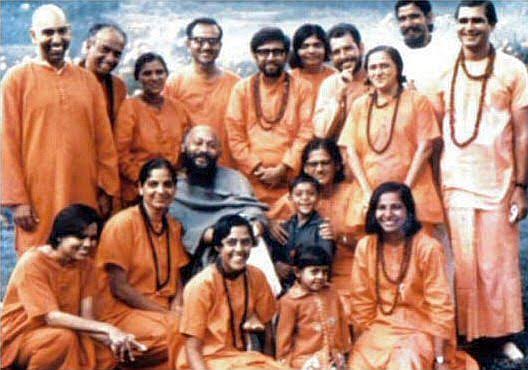Who is Osho ?
Osho, also known as Bhagwan Shree Rajneesh, was an Indian spiritual teacher and guru. He was born on December 11, 1931, in Kuchwada, Madhya Pradesh, India, and passed away on January 19, 1990, in Pune, Maharashtra, India.
Osho gained prominence in the 1970s and 1980s for his unique approach to spirituality and his teachings on meditation, self-awareness, love, and consciousness. He was a charismatic and controversial figure, attracting thousands of followers from around the world to his ashram in Pune, India, where he conducted meditation retreats and discourses.
His teachings, known as the “Osho Rajneesh movement,” emphasized the importance of living in the present moment, embracing individuality, and experiencing life fully without inhibitions. Osho also challenged traditional religious and societal norms, advocating for a more open and accepting approach to human sexuality and relationships.
During his time in the United States in the 1980s, Osho faced legal troubles and controversies, including the alleged involvement in criminal activities, leading to his arrest and subsequent deportation from the country.
Yes, Osho has devised numerous meditation techniques that are an integral part of his teachings and the Osho Neo-Sannyas movement. These meditation practices are designed to help individuals experience inner transformation, increase awareness, and attain a state of meditative consciousness.
A few of them are:

These meditation techniques are meant to be practiced in a group setting, often with music or guided instructions, although some can also be done individually. Osho believed that through these dynamic and transformative meditations, individuals could go beyond the limitations of the mind and connect with their true nature, leading to inner peace, joy, and a deeper understanding of themselves and the world around them.
Despite the controversies, Osho’s teachings continue to have a significant impact on many people worldwide. His books, recordings, and meditation techniques are still widely available, and his followers, known as “sannyasins” or “neo-sannyasins,” continue to practice his teachings and celebrate his legacy.
What is neo-Sannyas ?

September 28, 1970 was a memorable day. At Manali in the Himalayas, Osho initiated his first group of people into neo-sannyas.
Osho Neo-Sannyas, also known simply as “Neo-Sannyas,” refers to the spiritual movement that emerged around the teachings of Osho (Bhagwan Shree Rajneesh) in the 1970s and 1980s. The term “Neo-Sannyas” combines “neo,” meaning new or modern, with “sannyas,” a traditional Indian term for renunciation or the act of becoming a sannyasin, a seeker of truth.
Osho’s approach to sannyas was unique and different from traditional sannyasins in the Indian spiritual context. In the Osho Neo-Sannyas movement, becoming a sannyasin was not about renouncing the world and adopting a life of asceticism. Instead, it was about embracing life fully, living in the present moment, and being open to experiencing all aspects of life with awareness and consciousness.
When someone decided to become an Osho sannyasin, they would participate in a ceremony where they received a new name, often chosen by Osho himself. This new name was meant to represent a fresh start and a new identity on their spiritual journey.
The Neo-Sannyas movement attracted people from various backgrounds and nationalities, and Osho’s teachings emphasized individuality, meditation, love, and a holistic approach to personal growth and transformation. The Osho ashram in Pune, India, became a thriving international community where thousands of followers gathered to meditate, attend discourses, and participate in various personal growth workshops.
The movement faced controversies and legal challenges, particularly during Osho’s time in the United States in the 1980s. Osho was arrested and later deported from the country amid accusations of criminal activities.
After Osho’s passing in 1990, the Neo-Sannyas movement continued under the guidance of his appointed successors and senior disciples. The Osho International Foundation and various Osho meditation centers around the world continue to propagate his teachings and meditation techniques, making them accessible to those interested in exploring his philosophy of spiritual growth and self-awareness.

Osho Says:
To me, sannyas does not mean renunciation; it means a journey to joy, bliss. To me, sannyas is not any kind of negation; it is a positive attainment. But up to now, the world over, sannyas has been seen in a very negative sense, in the sense of giving up, of renouncing. I, for one, see sannyas as something positive and affirmative, something to be achieved, to be treasured.
Sannyas is just an initiation towards consciousness. It can’t be expected from you that you should be conscious when you take Sannyas. Sannyas is medicinal. When you are ill, medicine is needed. If a doctor makes it a condition that “Come only when you are healthy — I am not going to pour my medicine into such an ill body. First get healthy and then come,” then what is the point? Sannyas is medicinal — because you are unconscious, it is needed. I cannot expect you to take sannyas consciously; that is impossible. If you can take sannyas consciously, then you can do ANYTHING consciously. Then what is the problem? If you can take sannyas consciously, why can’t you eat consciously? Why can’t you walk consciously? Why can’t you love consciously? Where is the problem then? Then you will be conscious! You will be a Buddha and sannyas will not be needed. You cannot be conscious, that’s why sannyas is needed.

